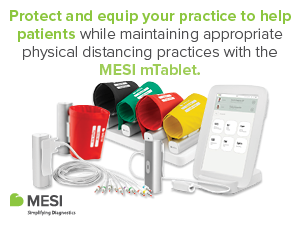-
PRODUCTS
- Anaesthesia & Respiratory
- Baby
- Casting
- Continence Care
-
Diagnostic
- See all Diagnostic
- Accessories
- Bladder Scanner
- Blood Testing
- Breathalyzer
- Cholesterol Testing
- Covid Testing
- Dermatoscope
- Diabetes Monitoring
- Drug Testing
- Endoscopy
- Eye Ear Nose & Throat
- Height Measures and Charts
- INR
- Jars and Containers
- Medical and Surgical Instruments
- Parts and Accessories
- Scales
- Testing
- Urinalysis
- Womens Health
- Ear Irrigation
-
Equipment
- See all Equipment
- "Miscelllaneous, Parts and Accessories"
- Beds
- Blood Collection Chair
- Bracket & Dispensers
- Carts & Trolleys
- Cryosurgery
- Electrosurgery
- Examination Couches & Tables
- Fridge & Freezers
- IV Stands
- Laundry & Cleaning Trolleys
- Miscellaneous
- Play Panels
- Privacy Screens and Curtains
- Stools and Step Ups
- Stools, Bed Screens & IV Stands
- Tens
- Transferring & Patient Handling
- Waste Disposal
- X-Ray Viewers
-
General Consumables
- See all General Consumables
- "Couch Rolls, Protectors & Underpads"
- "Registers, Records and Certificates"
- Bags Assorted
- Batteries
- Blankets and Warmers
- Bracket
- Child Rewards
- Containers
- Cups
- Dental Film Process Products
- Dr Bags
- Ear Piercing
- Feminine Hygiene
- First Aid and Trauma
- Gels and Lubricants
- Identification
- Linen
- Marker
- Miscellaneous
- Ostomy
- Paper and Printing Consumables
- Paper Products
- Parts and Accessories
- Personal Care
- Pill Cutters and Crushers
- Ultrasound Gel
- Wooden Applicators
- Gloves
- Hand & Body Hygiene
-
Infection Prevention & Control
- See all Infection Prevention & Control
- Absorbent Powder
- Bedpans & Urinals
- Caps
- Clinical Sheets
- Containers
- Dispensers
- Eye Protection
- Face Masks
- Hand Hygiene
- Miscellaneous
- Parts & Accessories
- Protective Apparel
- Scrubs
- Spill Kit
- Surface Cleansers & Wipes
- Surgical Packs & Drapes
- Toileting & Waste Disposal
- Tray Liners
- Wipes and Skin Protection
- Intravenous Infusion & Administration
-
Medical & Surgical Instruments
- See all Medical & Surgical Instruments
- Biopsy Punch
- Chiropody Pliers & Podiatry
- Cleaning and Protection
- Curettes
- Dental Syringe
- Dilator
- Ear Irrigation
- Forceps
- Hammer
- Male Health
- Marker
- Miscellaneous
- Nasal Speculum
- Needle Holder
- Pack
- Probe
- Retractor
- Ring Cutter
- Scalpel Handles & Blades
- Scissors
- Skin Hook
- Sucker
- Tuning Forks
- Urology
- Uterine Curettes & Sounds
- Medical Lighting
- Medical Lighting
- Needles & Syringes
- Nutritional Support
- Oral Care
- Patient Monitoring
-
Pharmaceuticals
- See all Pharmaceuticals
- Alimentary
- Anaesthetic
- Analgesia
- Antihistamines
- Cardiovascular
- Central Nervous System
- Creams and Ointments
- Endocrine & Metabolic
- Eye Ear Nose & Throat
- Infections & Infestations
- Miscellaneous
- Musculoskeletal
- Nutrition
- Ointment Products
- Other
- Register
- Respiratory
- Skin
- Solutions
- Rehabilitation & Mobility
- Skin Care
- Sports & Recovery
-
Sterilisation
- See all Sterilisation
- Autoclaves
- Biological Indicators and incubators
- Chemical Indicator Tapes
- Chemical Indicators and Integrators
- Cleansing Solutions & Detergents
- Instrument Protector
- Labels
- Marker
- Paper and Printing Consumables
- Parts & Accessories
- Record Keeping Supplies
- Steam Indicator Sheets and Tests
- Sterilisation Pouches & Rolls
- Towels and Cloths
- Trays and Bowls
- Ultrasonic Cleaners
- Water
- Wraps
- Sutures & Skin Closures
- Urology
- Vaccines
- Wound Care
- Wound Management
- News & Updates

How To Best Manage Diabetes
Diabetes according to Diabetes Australia is a complex condition that results in abnormal levels of glucose in the blood. As glucose is the primary source of energy in the human body, this causes an array of both short, and long-term health complications.
Diabetes occurs in three main types; type 1, type 2 and gestational diabetes. Definitions are listed below as per Diabetes Australia.
Type 1 Diabetes: an autoimmune condition in which the immune system is activated to destroy the cells in the pancreas which produce insulin.
Type 2 Diabetes: a progressive condition in which the body becomes resistant to the normal effects of insulin and/or gradually loses the capacity to produce enough insulin in the pancreas
Gestational Diabetes: a form of diabetes that occurs during pregnancy. Most women will no longer have diabetes after the baby is born. However, some women will continue to have high blood glucose levels after delivery. It is diagnosed when higher than normal blood glucose levels first appear during pregnancy.
All three types of diabetes are also increasing in prevalence with type 2 accounting for 85% of all diabetes. Although there is a collection of factors that contribute to an increased risk of diabetes, the spike of type 2 diabetes in particular is partially due to the impacts of an obesity spike in Australia.
Complications that result from diabetes include; blindness, amputations, heart disease and kidney disease.
As with any chronic conditions, diabetes results in many impacts beyond the physical complications. The stigma that 4 in 5 diabetes patients experience creates an environment for mental and emotional health to worsen. Diabetes Australia states that 50 per cent of people with diabetes have experienced mental health challenges in the last 12 months.
It is important to advocate and support this group of people and Diabetes Australia does so by creating National Diabetes Week (11th – 17th July 2021).
Unfortunately, there is no cure for diabetes and the only way to survive with the condition is through strict management of insulation.
Blood insulin levels are managed through blood glucose monitors followed up by insulin injections (type 1 diabetes) to hopefully avoid the complications that arise from abnormal blood glucose.
If you are a diabetes patient, ask your local GP if you should consider a non-invasive ABI test. There are many GP’s in Australia who have the ability to perform this test.
Click here to find your closest location.
Click here to browse the full range of diabetes products from Vital Medical Supplies.
Newsletter
Please enter your email address to subscribe to our newsletters.



